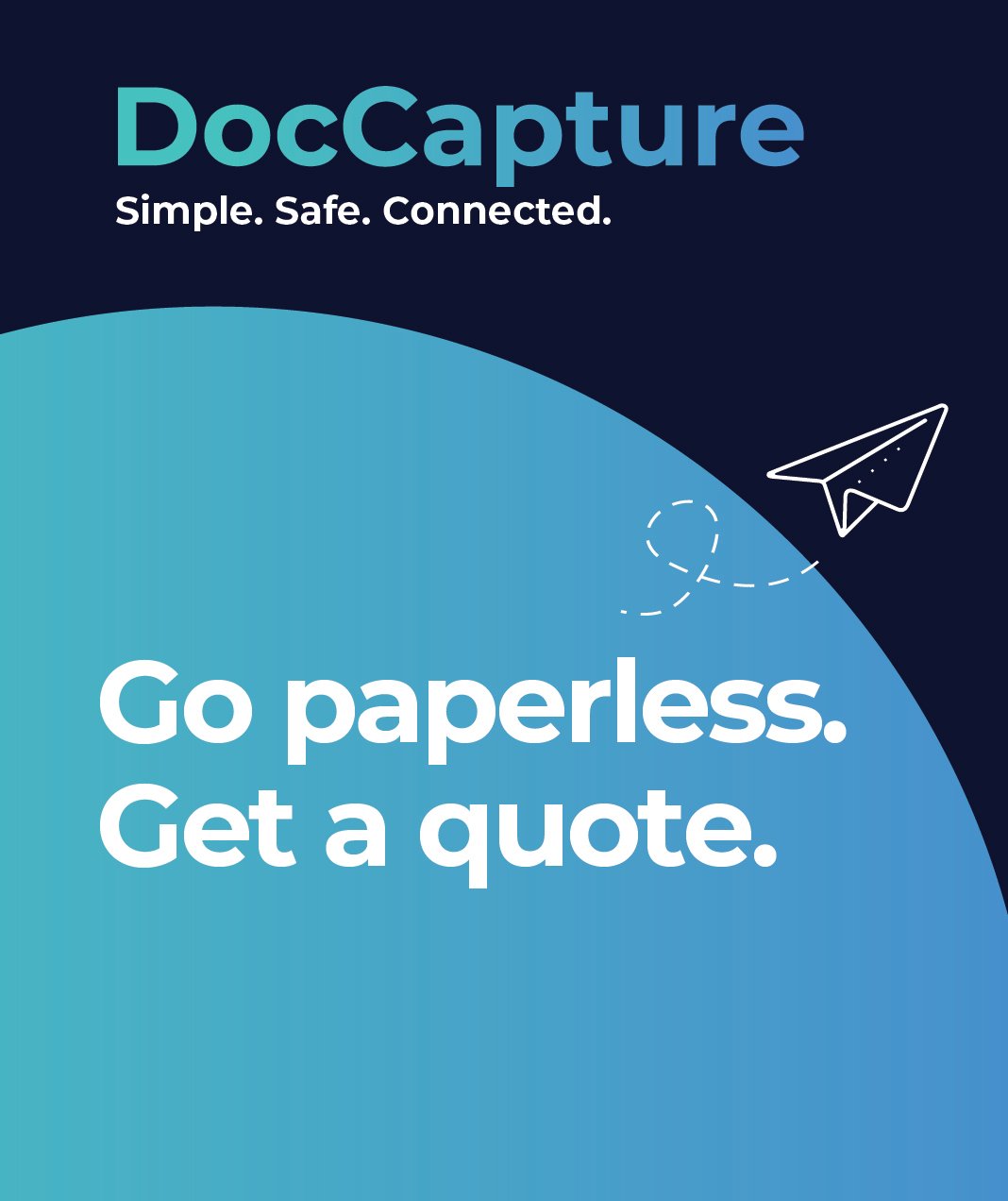Integrating Document Scanning into Existing HR Systems
Table of contents
HR teams handle an overwhelming amount of paperwork—employee records, contracts, benefits forms, compliance documents, and more. Storing and managing these documents manually isn't just inefficient; it's risky. Lost files, security breaches, and compliance violations can create serious headaches. That’s why many organizations are shifting to digital solutions.
Integrating HR document scanning into existing systems helps streamline operations, improve compliance, and enhance data security. But there’s one big concern: How do you introduce a new system without disrupting daily operations?
This guide will walk you through the challenges, key steps, and real-world benefits of a seamless integration process. Plus, we’ll show you how DocCapture makes it easier for HR teams to transition smoothly.
Challenges in Integrating HR Document Scanning
Switching to a digital document management system is a smart move, but it’s not without challenges. HR teams need a solution that integrates smoothly with existing systems, meets compliance requirements, and keeps employee data secure. Here’s what to watch for and how to overcome common hurdles.
Compatibility with Existing HR Software
Most HR departments rely on HRIS platforms, payroll systems, and compliance tracking tools. If a scanning solution doesn’t sync with these, it can lead to duplicate work and data mismatches. The key is finding a system that integrates with your existing HR tech stack.
Solutions like DocCapture’s HR Document Scanning ensure seamless compatibility, reducing manual data entry and improving workflow efficiency.
Meeting Compliance Standards
HR records contain sensitive information, making compliance with GDPR, HIPAA, and labor laws a top priority. A poorly managed document system can lead to costly fines or legal risks.
A secure scanning solution should include encryption, role-based access, and audit trails to keep your organization compliant. Learn more about compliance-focused HR solutions in this guide on digital transformation.
Managing Data Security Risks
HR documents hold personal information like social security numbers and salary details, making them a prime target for cyber threats. Weak security can put employee data at risk.
A well-implemented document scanning system offers end-to-end encryption, secure cloud storage, and automated backups. See how modern HR teams are enhancing security through digital document management.
Overcoming Resistance to Change
Change isn’t always easy. HR teams used to paper-based or legacy systems may worry about learning new technology or disrupting daily operations. A clear transition plan can make all the difference.
Engaging employees early, offering hands-on training, and phasing the rollout can ease the transition. Many organizations have successfully digitized their employee files—here’s how forward-thinking HR teams are doing it.
Key Steps for a Smooth Integration
A successful transition to digital document management requires a clear plan. The goal is to integrate HR document scanning without disrupting daily operations. Here’s how to do it right.
Assess Your Current HR Systems and Needs
Before choosing a scanning solution, take a step back and evaluate your current workflows. Where are the bottlenecks? Are paper-based processes slowing down hiring, payroll, or compliance tracking?
A full assessment helps pinpoint inefficiencies and ensures the new system meets your specific needs. Companies embracing digital transformation in HR are already seeing the benefits—here’s why it matters.
Choose a Scanning Solution That Integrates Seamlessly
Not all document scanning solutions are built for HR. The best ones integrate directly with your HRIS, payroll, and compliance systems so that scanned documents are automatically indexed and accessible.
Solutions like DocCapture offer compatibility with major HR platforms, eliminating manual data entry and reducing administrative workload.
Prioritize Security and Compliance
HR records contain sensitive employee data, so security should be a top priority. A good document scanning system should offer encryption, access controls, and secure storage options.
Having a solution that aligns with industry regulations like GDPR and HIPAA ensures that your company stays audit-ready. Learn more about best practices for securing HR data in this guide.
Develop a Change Management Plan
Resistance to change is natural, but a well-planned rollout can make adoption easier. Start with leadership buy-in, communicate the benefits clearly, and provide hands-on training for HR teams.
A phased implementation—starting with high-impact areas like employee records and payroll—can help teams adjust gradually. Many companies have successfully digitized their HR records without disruption. See how they did it in this case study.
Real-World Benefits of Successful Integration
HR teams that successfully transition to digital document management see immediate and long-term benefits. From faster processes to stronger compliance, here’s how organizations are improving their HR operations.
Increased Efficiency and Productivity
Manual document handling slows everything down—retrieving a single file can take minutes, if not longer. With a well-integrated scanning solution, HR teams can instantly access employee records, contracts, and compliance documents.
Companies using HR document scanning report significant time savings, allowing HR professionals to focus on strategic tasks instead of paperwork.
Stronger Compliance and Security
Regulatory audits can be stressful, especially when HR documents are scattered across filing cabinets or outdated systems. A digital document management solution ensures that records are stored securely, easily retrievable, and compliant with GDPR, HIPAA, and labor laws.
Organizations investing in digital transformation are already improving compliance and reducing security risks—see how they’re doing it.
Cost Savings on Storage and Administration
Physical storage takes up office space, and manual paperwork management increases administrative costs. Digitizing HR records reduces the need for paper, filing cabinets, and offsite storage.
By integrating document scanning into their HR systems, businesses are cutting costs while improving efficiency. Learn more about the financial benefits in this breakdown of modern HR scanning solutions.
A Better Employee Experience
Onboarding, benefits enrollment, and performance reviews all involve paperwork. A slow, outdated system can frustrate employees and delay critical HR processes.
With a digital document system, employees can submit and access forms faster, leading to a smoother experience. Forward-thinking HR teams are already digitizing employee files for a more agile workforce—see how they’re preparing for the future.
How DocCapture Simplifies HR Document Scanning Integration
Choosing the right scanning solution makes all the difference in ensuring a smooth transition to digital HR document management. DocCapture is designed to integrate effortlessly with existing HR systems, providing security, compliance, and efficiency without disrupting daily operations.
Seamless Integration with HR Platforms
DocCapture connects directly with leading HR software, including HRIS, payroll, and compliance management tools. This eliminates the need for manual data entry and ensures all scanned documents are automatically stored and categorized in the right system.
HR teams no longer have to worry about whether their scanning solution will work with their existing tech stack—DocCapture makes integration easy. Learn more about its HR document scanning capabilities here.
Built-In Compliance and Security Features
Compliance isn’t an afterthought with DocCapture—it’s built into the system. With features like encryption, access controls, and automated audit logs, HR teams can be confident that sensitive employee records are protected and meet regulatory requirements.
For organizations that need to ensure GDPR, HIPAA, and labor law compliance, DocCapture provides the tools to maintain security and audit readiness. More insights on digital compliance in HR can be found here.
Faster, More Efficient HR Workflows
With DocCapture, HR teams can process and retrieve documents in seconds instead of hours. Whether it’s onboarding new employees, managing payroll records, or responding to compliance audits, everything is digitized, searchable, and accessible from anywhere.
By reducing the time spent on paperwork, HR professionals can focus on employee engagement and strategic initiatives rather than administrative tasks. See how other HR teams are benefiting from digital document management here.
Conclusion
Integrating HR document scanning doesn’t have to be complicated. With the right strategy and technology, organizations can streamline operations, improve compliance, and enhance security without disrupting daily workflows. The key is choosing a solution that integrates smoothly with existing HR systems while offering strong security and compliance features.
DocCapture makes this transition easy by providing seamless integration, built-in compliance tools, and fast, efficient document processing. Whether you’re looking to digitize employee records, simplify audits, or improve overall HR efficiency, DocCapture has you covered.
Ready to upgrade your HR document management? Fill out our "Get a Quote" form to see how DocCapture can help your organization make the switch effortlessly.
Share this
You May Also Like
These Related Stories

Navigating GDPR and HIPAA: The Role of Digital Document Management

Improving Employee Record Management with Document Scanning

